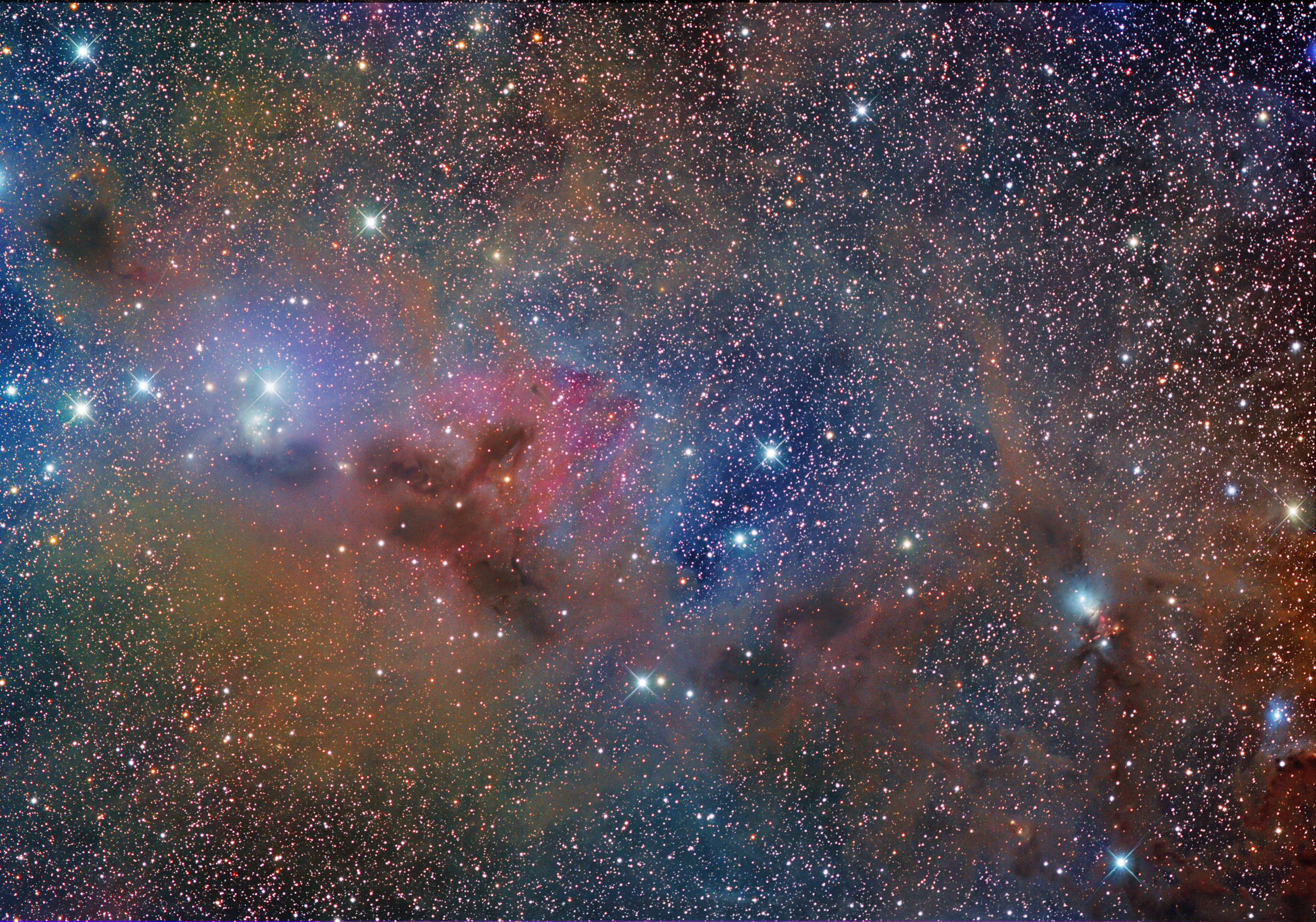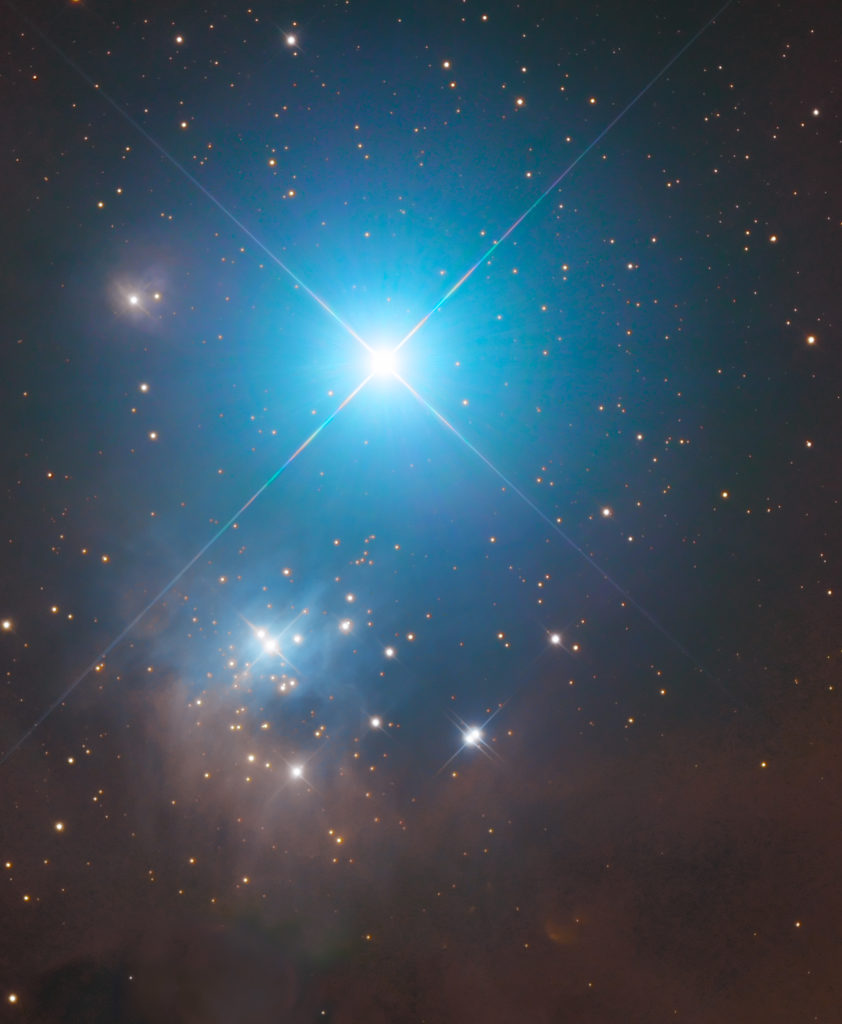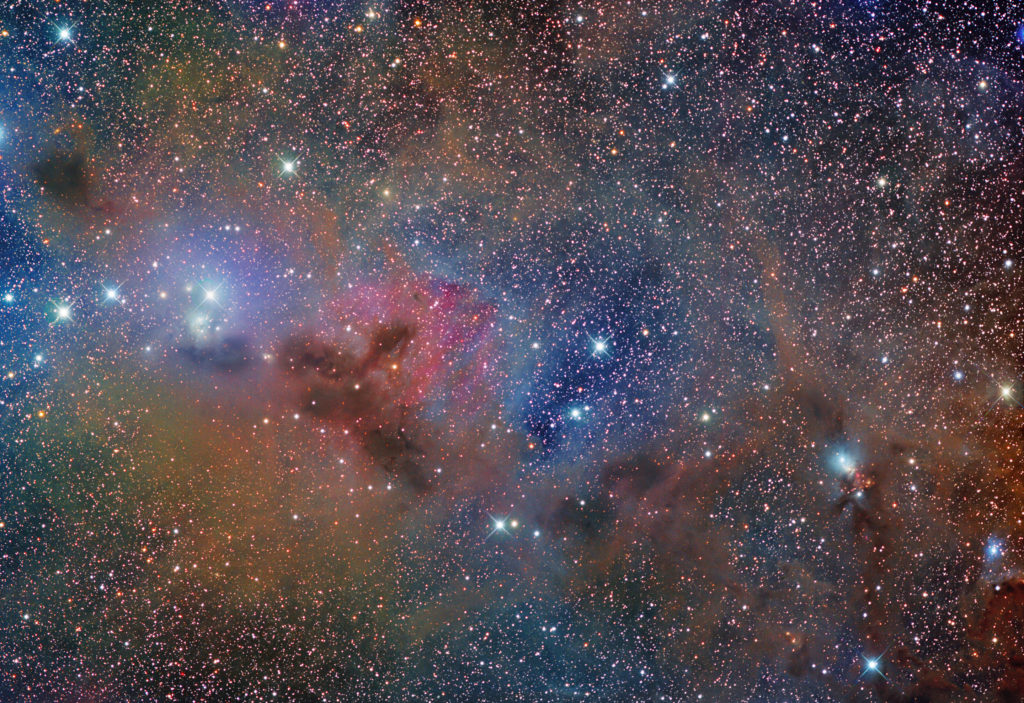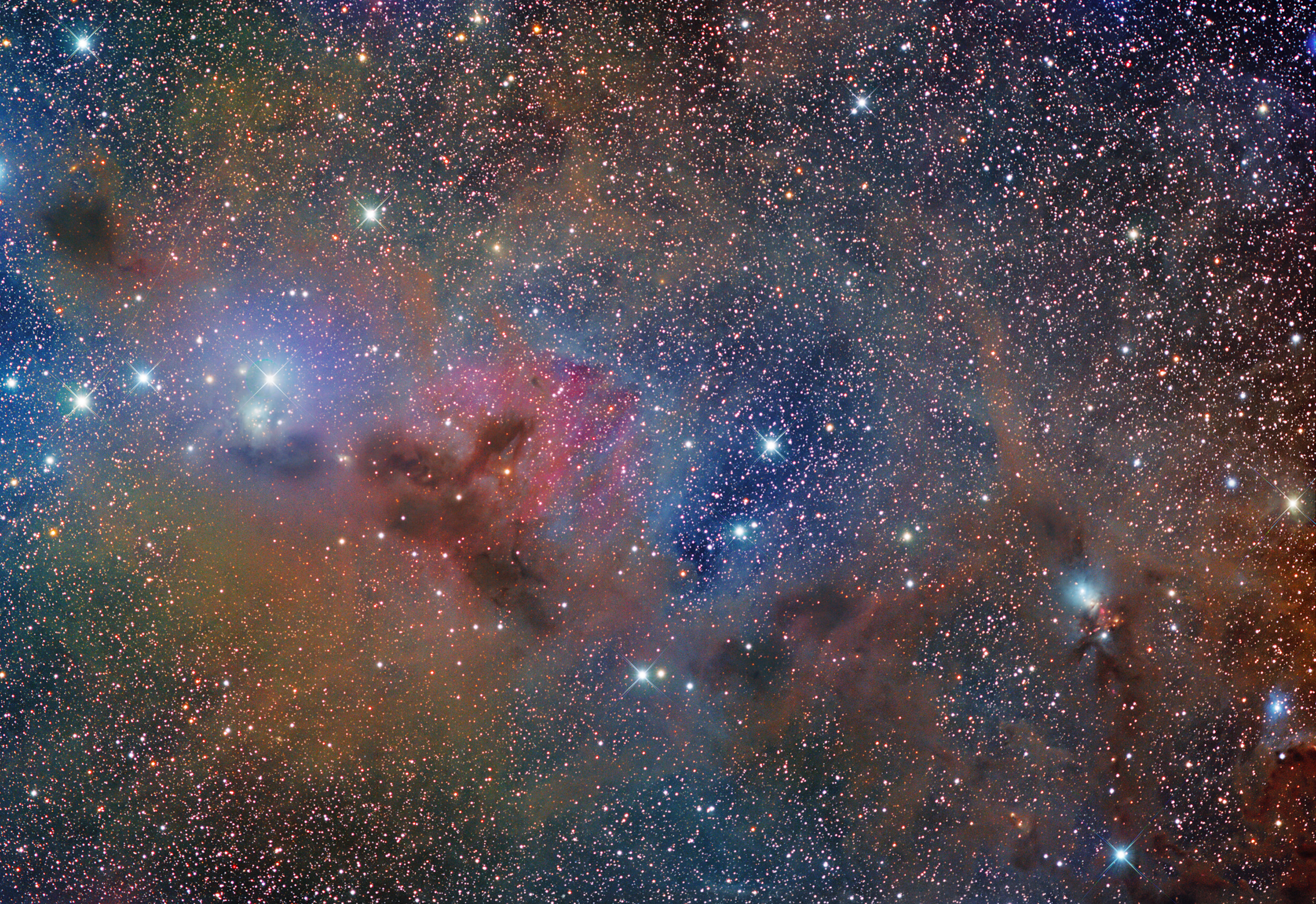Mouseover Image for Effect (see bottom of page for IC348 & NGC1333 closeups)

Click Image Below to Zoom
Image Details
Instrument – 100mm f/3.8 Vixen VSD Astrographic refractor, piggybacked on RCOS
Camera – SBIG ST-11K monochrome CCD camera with L R G B filters
Mount – Astro-Physics 1600 with permanent pier in observatory
Guiding – Off axis SBIG ST-402 on Monster MOAG through RCOS
Exp. Time/Filters – L(2.6 hrs), R(5.6 hrs), G(4.7 hrs), B(5.5 hrs) = Total 18.4 hrs
Location – Chiefland Astronomy Village (North Florida, USA)
Processing – CCDStack, Maxim DL, Adobe PS CS5

100mm f/3.8 Vixen refractor piggybacked on 14.5″ RCOS Ritchey-Chretien awaiting moonset
Imagine what Vincent van Gogh’s colorful impressionist “Starry Night” would look like if painted tonight under our light-polluted night skies. Chances are under today’s conditions, he would not have bothered at all! A new analysis using satellite data and sky brightness has found that the Milky Way is hidden from 60% of Europeans and nearly 80% of North Americans as reported in the journal Science Advances (see link below). Their calculations show that more than 99 per cent of US and European populations live under light polluted skies. “This is an aesthetic loss and perhaps a spiritual loss in terms of feeling a connection to the cosmos” Chris Elvidge, NOAA scientist told the Huffington Post. He continues “The starry night sky has long been a profound source of awe and inspiration, which we know stirs creativity, generosity, good will and innovation. Losing a clear night sky will harm our capacity for wonder and put a dent in our spirit of common cause”.
I now live under a light polluted night sky where the Milky Way has been visible only twice in 35 years and that was thanks to hurricanes temporarily knocking out our power. One of my favorite things to do as a child was night fishing on Devil’s Lake, Michigan where the summer Milky Way stretched from horizon to horizon, stars shone brightly, meteors visited nightly and aurora occasioned. At the time, I wondered why were there dark lanes and holes in the Milky Way. I could never have imagined that a half a century later the depth to which that childhood curiosity has stirred me to explore that same Milky Way with backyard telescopes and cameras with great enthusiasm and spiritual satisfaction!
Once a month, I travel with my family to the Bortle 2- 3 dark skies of the Chiefland Astronomy Village (northern Florida) where camaraderie means sharing celestial images and spinning observing tales. During a recent trip to the Village, I chose to record the Great Perseus Molecular Cloud and explore its contents in detail. The Perseus Molecular Cloud is essentially invisible in visible light wavelengths and its six degree extent has been defined by radio telescopes primarily at 21cm. wavelength. I recorded about a 5 degree extent of this cloud with my 4 -inch refractor highlighted by two distinct star nurseries, namely IC348 in the east end and NGC1333 anchoring the opposite end both penetrating through the molecular cloud like mountain peaks poking through a fog layer. The large widefield image was captured using a 18.4-hour exposure through my 4-inch Vixen f/3.8 refractor using LRGB filters and SBIG 11K CCD Camera. An annotated version is attached. IC348 and NGC1333 are the subjects of hot ongoing professional research dubbed “IN SYNC” (Infrared Spectra of Young Nebulous Clusters) because these are some of the nearest star birth regions to Earth. A Univ. of Florida astronomer is one of the principal investigators (see link below).
Superimposed on the widefield refractor image are two insets which are close-ups of the star birth regions IC348 and NGC1333. These shots were taken with my 14.5-inch RCOS Ritchey-Chretien f/9 telescope using LRGB filters and Apogee U16M CCD Camera. The RCOS images show numerous Herbig-Haro protostar nebulae in NGC1333 and the extremely faint enigmatic circumstellar disk “Flying Ghost Nebula” (0340+3152) near IC348 discovered by M. Bouchard in 1995. What I was not able to detect were the “bent jets” described by Bally et al (2001 – link below) extending from Herbig-Haro nebulae despite long exposures through Hydrogen-alpha and Sulfur II filters. Perhaps it is time for a more red-sensitive camera. Or how about exploring the Great Orion star forming region? The sky is the limit!
http://www.huffingtonpost.com/entry/light-pollution-psychological-effects_us_5759d91be4b0e39a28ad0e93 – Huffington Post (2016) about Light pollution
http://www.astro.ufl.edu/insync/ – Univ. of Florida research pdf on IC348 & NGC1333
http://www.astro.ufl.edu/insync/docs/tan_j.pdf – UF research pdf
http://iopscience.iop.org/article/10.1086/318258/pdf — 2001 Bally and Reipurth “Bent Jets” emanating from HH regions
http://www.ifa.hawaii.edu/publications/preprints/08preprints/Walawender_08-206.pdf — great article on NGC1333 including “bent jets”
https://en.wikipedia.org/wiki/The_Starry_Night — van Gogh, Starry Night & Starry Night over the Rhone
Mouseover Images for Effect


Image Details
Instrument – 14.5-inch f/9 RCOS Ritchey-Chretien with field flattener
Camera – Apogee U16M CCD camera with L R G B Ha SII OIII filters
Mount – Astro-Physics 1600 with permanent pier in observatory
Guiding – Off axis SBIG ST-402 on Monster MOAG through RCOS
Exp. Time/Filters – IC348 = L(7.5 hrs), R(2 hrs), G(2 hrs), B(2hrs) = Total 13.5 hrs; NGC1333 = L(9.6 hrs), R(2.3 hrs), G(2.3 hrs), B(2.3 hrs) = Total 16.6 hrs
Location – Chiefland Astronomy Village (North Florida, USA)
Processing – CCDStack, Maxim DL, Adobe PS CS5

